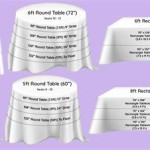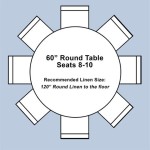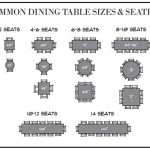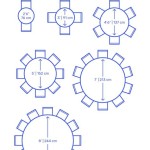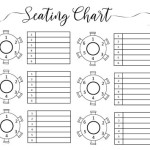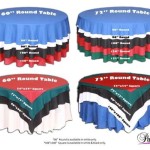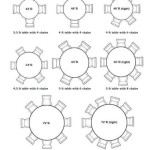What Size Tablecloth Do I Need? A Comprehensive Guide
Selecting the correct size tablecloth is essential for creating a polished and aesthetically pleasing dining or event space. A tablecloth that is too small will look inadequate and fail to protect the table surface, while one that is excessively large can appear sloppy and cumbersome. To ensure a proper fit, it is crucial to understand the factors influencing tablecloth sizing and the methods for accurately determining the dimensions you require. This article provides a detailed guide to help navigate the process of choosing the ideal tablecloth size.
Understanding Table Dimensions and Shapes
The first step in determining the appropriate tablecloth size involves accurately measuring the table's dimensions. The length, width, and, in the case of round or oval tables, diameter are critical measurements. Irregularly shaped tables require careful measurement at their widest and longest points. For rectangular and square tables, use a measuring tape to determine the length and width in inches or centimeters. For round tables, measure the diameter – the distance from one edge of the circle to the opposite edge, passing through the center. For oval tables, measure both the length and width at their maximum points. Accurate measurements form the foundation for calculating the necessary tablecloth size.
Beyond the specific dimensions, the shape of the table dramatically influences the tablecloth selection. Rectangular tables are typically straightforward, requiring a rectangular tablecloth. Square tables similarly require a square cloth. Round tables, however, necessitate a round tablecloth, whereas oval tables demand an oval shaped cloth. Attempting to use a rectangular tablecloth on a round table, or vice versa, will almost always result in an ill-fitting and visually unappealing arrangement. Recognizing the table's shape is, therefore, a prerequisite to selecting the appropriate style and size of tablecloth.
Consideration must also be given to the table's height. While the surface dimensions dictate the main size calculation, the table's height influences the desired drop, which is the length of the tablecloth that hangs down from the table's edge. Standard tables typically stand around 30 inches tall, but variations exist. Bars and counters might have higher tables, while coffee tables are considerably lower. The table height should be noted alongside the surface dimensions.
Calculating the Ideal Tablecloth Drop
The "drop" refers to the amount the tablecloth hangs over the edge of the table. The desired drop is a critical component of calculating the overall tablecloth size. The ideal drop is subjective and depends largely on the occasion and the desired aesthetic. For formal occasions, a longer drop is generally preferred, creating a more elegant and sophisticated look. For casual settings, a shorter drop might be more appropriate.
A standard drop typically ranges from 8 to 12 inches. This provides sufficient coverage to partially hide the table legs while avoiding excessive fabric that could become a tripping hazard. For formal events, consider a drop of 15 to 30 inches. A 30-inch drop, often referred to as a "full drop," means the tablecloth extends all the way to the floor. This is commonly used for banquet tables and wedding receptions to create a dramatic and luxurious effect. However, full drops are not suitable for all situations, particularly where there is high foot traffic or where accessibility is a concern.
To calculate the required tablecloth size, first determine the desired drop length. Then, multiply that drop length by two, as the drop needs to be accounted for on both sides of the table. Add this total to the table's length and width (or diameter for round tables). For example, if a rectangular table is 60 inches long and 36 inches wide, and a 12-inch drop is desired, the calculation would be as follows:
Tablecloth Length: 60 inches (table length) + (12 inches (drop) x 2) = 84 inches
Tablecloth Width: 36 inches (table width) + (12 inches (drop) x 2) = 60 inches
Therefore, an 84-inch by 60-inch tablecloth would be required.
For round tables, the calculation is slightly simpler. Measure the diameter of the table and add twice the desired drop. For instance, if a round table has a diameter of 48 inches and a 10-inch drop is desired, the calculation is:
Tablecloth Diameter: 48 inches (table diameter) + (10 inches (drop) x 2) = 68 inches
A 68-inch round tablecloth would therefore be needed.
Accounting for Fabric Properties and Practical Considerations
The type of fabric used for the tablecloth can subtly influence the required size. Some fabrics, such as linen or cotton, are prone to shrinkage after washing. To compensate for this, it is advisable to add a few extra inches to the calculated dimensions. Pre-shrinking the fabric before sewing the tablecloth can also mitigate this issue. Synthetic fabrics like polyester are generally less prone to shrinkage and may not require this additional allowance.
The intended use of the tablecloth should also be considered. For tables that are frequently used for dining, a slightly longer drop might be preferred to provide better protection against spills and stains. Conversely, for purely decorative tables, a shorter drop might be more visually appealing. For tables used in outdoor settings, a longer drop might be undesirable as it could be more susceptible to wind and dirt.
Accessibility is another crucial consideration, particularly for tables used in commercial settings. A full drop tablecloth can impede access for individuals using wheelchairs or other mobility aids. In such cases, a shorter drop, or the use of a table runner in conjunction with a smaller tablecloth, might be more appropriate. The principles of universal design should be considered to ensure that the table is accessible to all users.
Finally, it is important to consider the availability of tablecloth sizes. Tablecloths are typically manufactured in standard sizes, and it may not be possible to find a tablecloth that perfectly matches the calculated dimensions. In such cases, it is generally better to err on the side of a slightly larger tablecloth rather than one that is too small. Excess fabric can be tucked or folded to achieve a more tailored look. Alternatively, custom-made tablecloths can be ordered to ensure a perfect fit, although this option is typically more expensive. Understanding standard tablecloth sizes and aligning those with the calculated requirements is a necessary step in the selection process.
Ultimately, choosing the right size tablecloth involves a combination of accurate measurement, careful calculation, and consideration of practical and aesthetic factors. By following these guidelines, it is possible to select a tablecloth that complements the table and enhances the overall ambiance of the space.

How To Choose The Right Size Tablecloth Ultrapom Wedding And Event Decor Al

What Size Tablecloth Do I Need Deconovo Us

Use This Tablecloth Size Chart For Perfect Party Planning Lovetoknow

Ping For A Tablecloth Start With Our Size Calculator Chart Table Cloth Round Sizes

Let S Talk Linens The Ultimate Guide To Table Linen Sizes Party Al Ltd Pink Hippo Blog

Tablecloth Size Guide Table Linen Hire Tips Plato

How To Choose Tablecloths Understanding Correct Measurements Your Chair Covers Inc

What Size Tablecloth Do I Need The Ultimate Guide For All Sizes And Shapes Design Morsels

3 Easy Ways To Measure Tablecloth Sizes Your Table Linens Size Guide

Let S Talk Linens The Ultimate Guide To Table Linen Sizes Party Al Ltd Pink Hippo Blog
Related Posts

